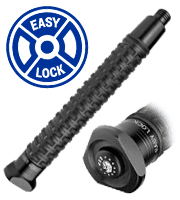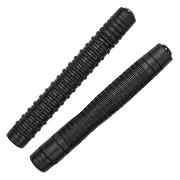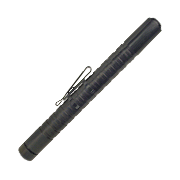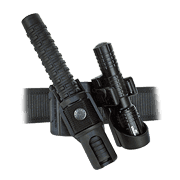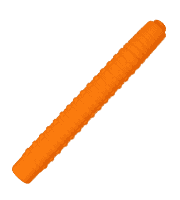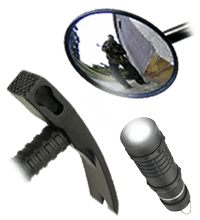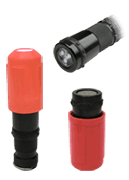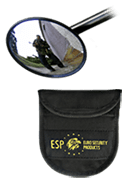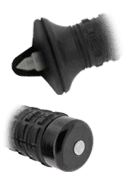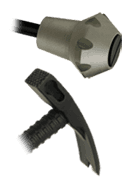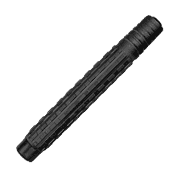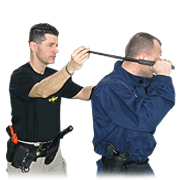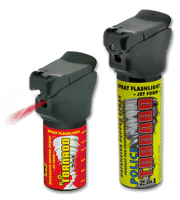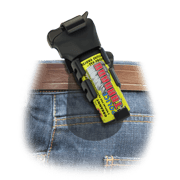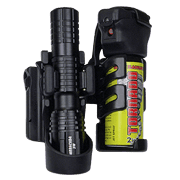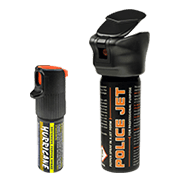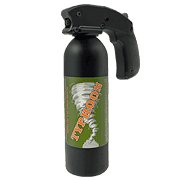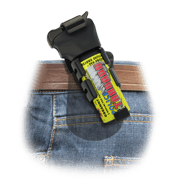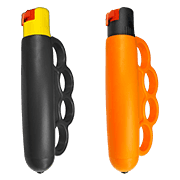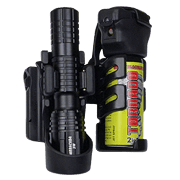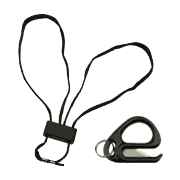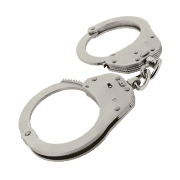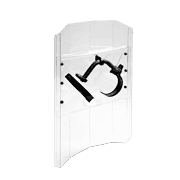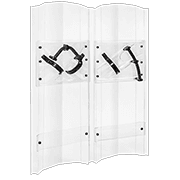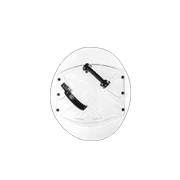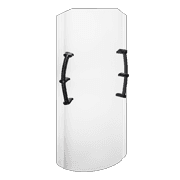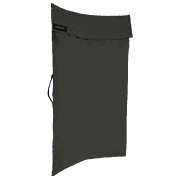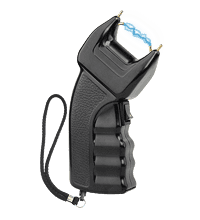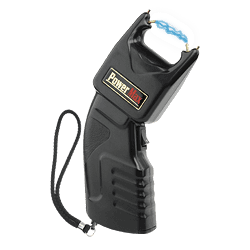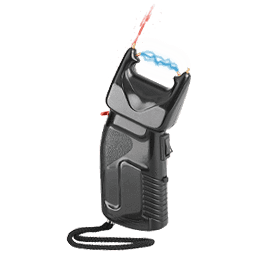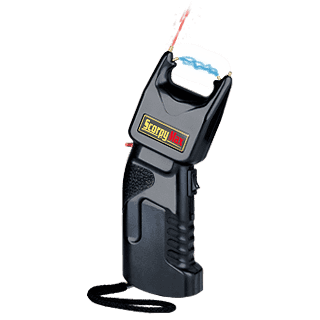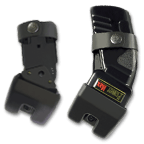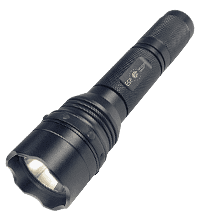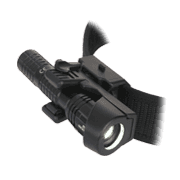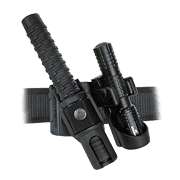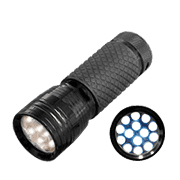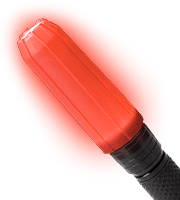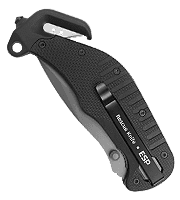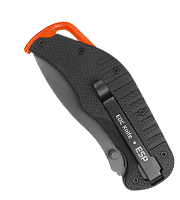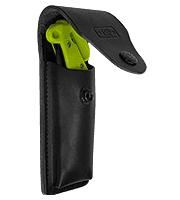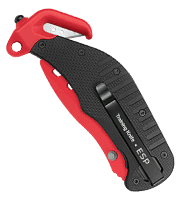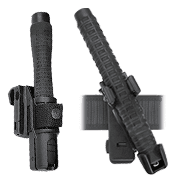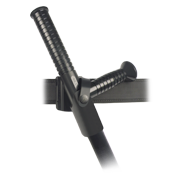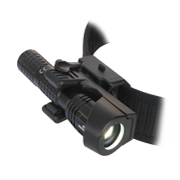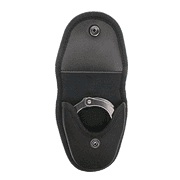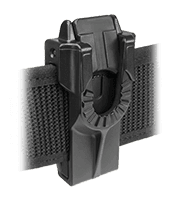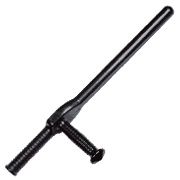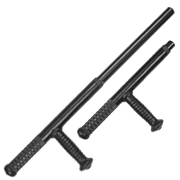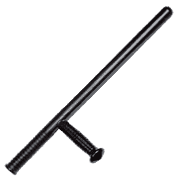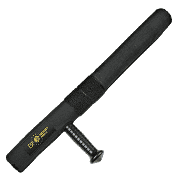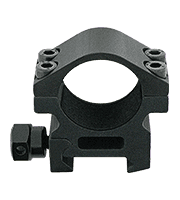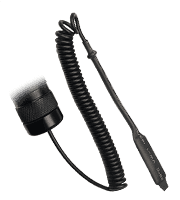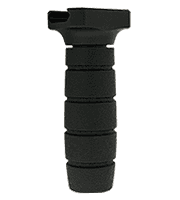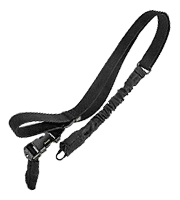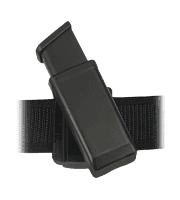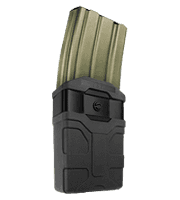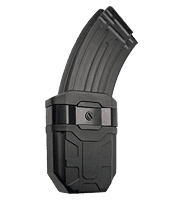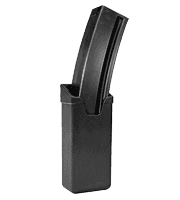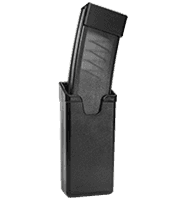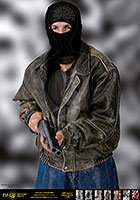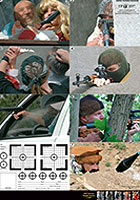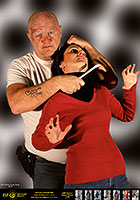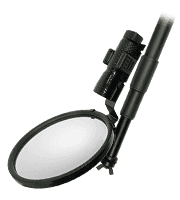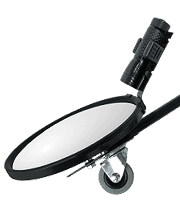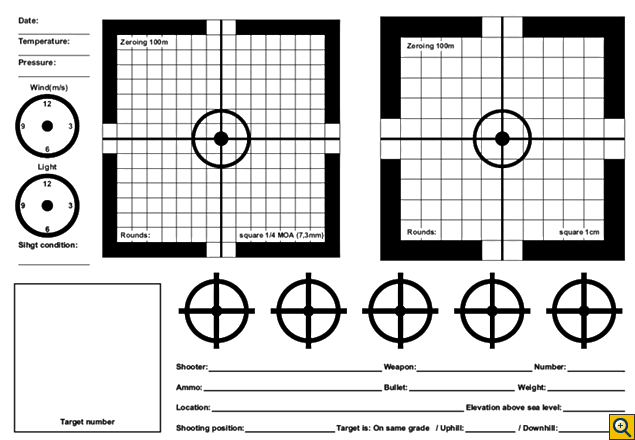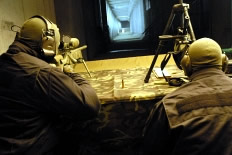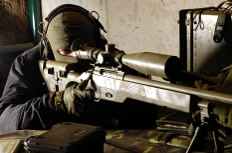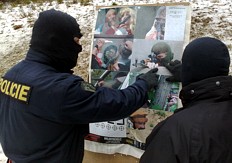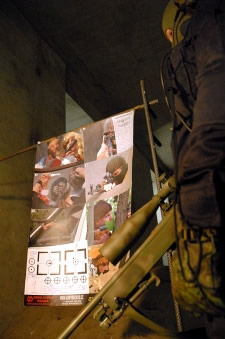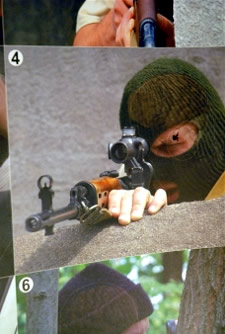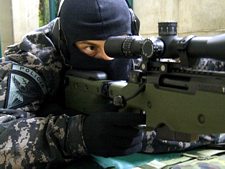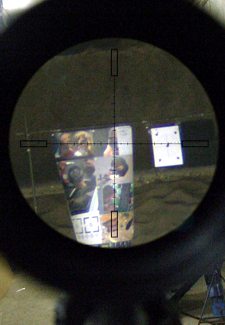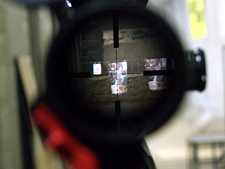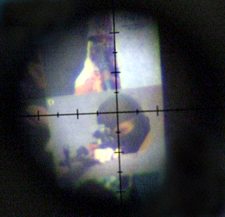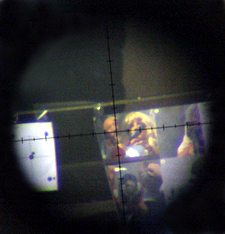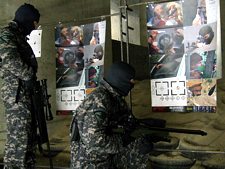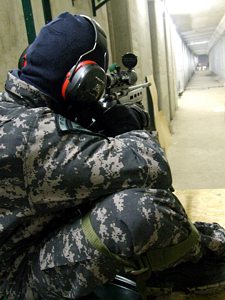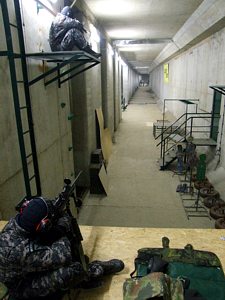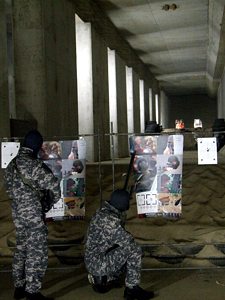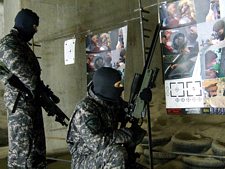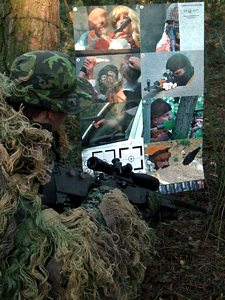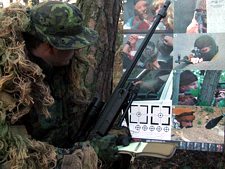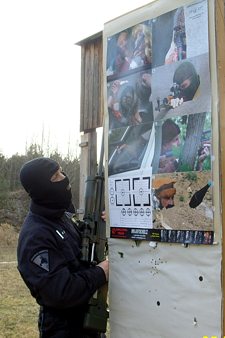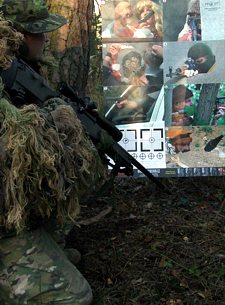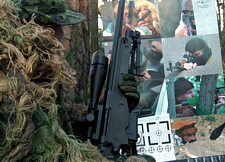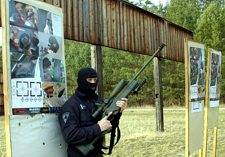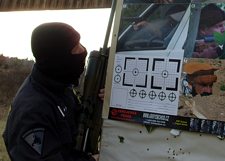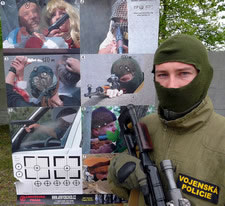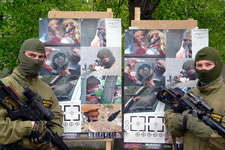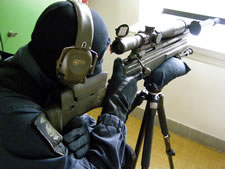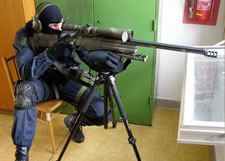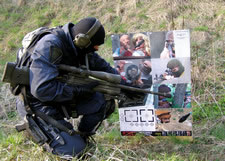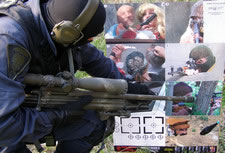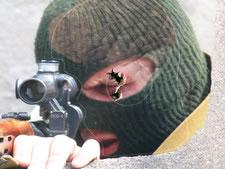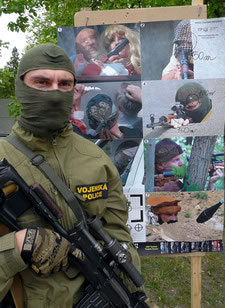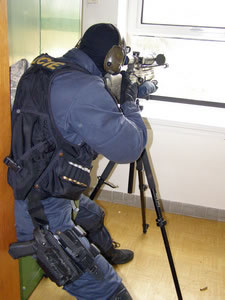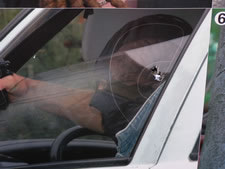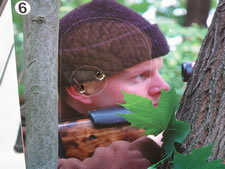Training of some special skills has very special specifications and requirements. This is most evident particularly in case of training of police and military snipers. The shooting distance is here much longer than in case of majority of other weapons and targets are incomparably more difficult due to their appearance. Besides, responsibility ensuing from necessity of action in real action can be tremendous. That’s why shooting practice of snipers requires somewhat different targets, in comparison to usual firing practice with use of pistol or machine gun.
Nevertheless, only few targets designed specifically for such training exist in practice. Apart from that the available targets are not very suitable due to their design and unrealistic appearance. Out of necessity various substitutes and even ordinary pistol targets, often just black and white, animated and not very imaginative were used. For these reasons numerous police snipers and special forces instructors called already for a long time for a completely new paper target, which would finally meet even the most demanding requirements of professional sniper training in the third millennium.
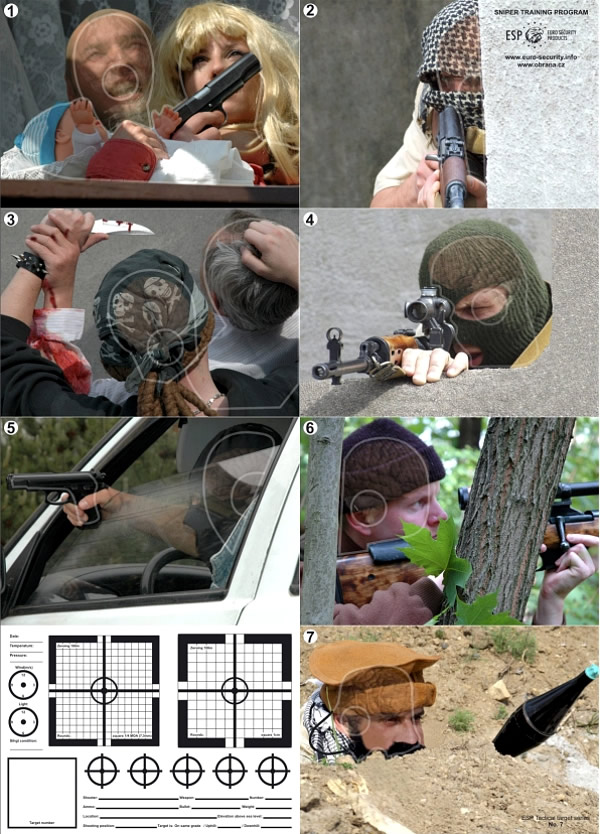
Dimensions
- 600 × 880 mm
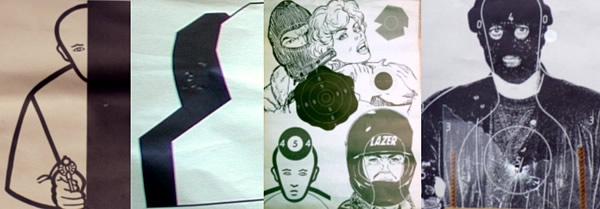
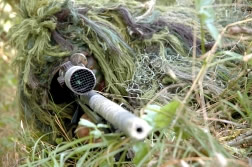 |
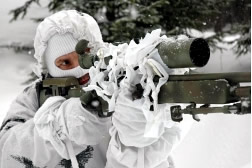 |
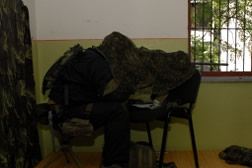 These tendencies were obvious not only in our country, but more and more also in other countries. That’s why after its first successful series of tactical targets the company ESP decided to launch a completely new product, which would as much as possible suit those, whose exact shot may in real action often save many human lives. Realisation of this idea started after collection of numerous experience and valuable pieces of knowledge from all over the world. Many of top class snipers from renowned elite units and expert trainers of precise shooting at long distances participated from the very beginning in development of this new training aid. It was namely their contribution in the form of many professional consultations and practical tests to the existing design of new sniper target, which in opinion of many knowledgeable experts is one of the most successful training aids. It is a “sniper program“ for one complex training.
These tendencies were obvious not only in our country, but more and more also in other countries. That’s why after its first successful series of tactical targets the company ESP decided to launch a completely new product, which would as much as possible suit those, whose exact shot may in real action often save many human lives. Realisation of this idea started after collection of numerous experience and valuable pieces of knowledge from all over the world. Many of top class snipers from renowned elite units and expert trainers of precise shooting at long distances participated from the very beginning in development of this new training aid. It was namely their contribution in the form of many professional consultations and practical tests to the existing design of new sniper target, which in opinion of many knowledgeable experts is one of the most successful training aids. It is a “sniper program“ for one complex training.
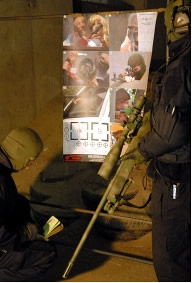 |
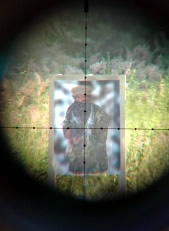 |
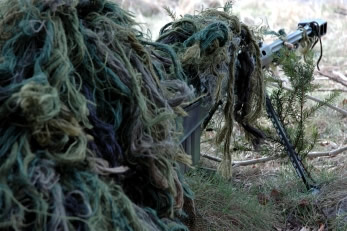 |
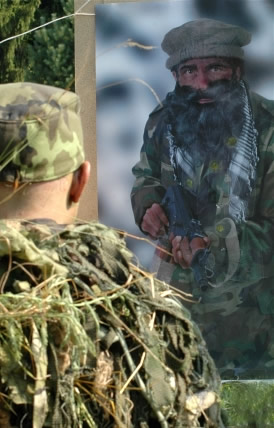 The fact is that existing ESP photographic targets are already successfully used for sniper trainings. They are, however, used particularly for training of army snipers, who shoot at extreme distances, often several hundred meters. Design of existing target is quite appropriate for such shooting, since the standard aim at a distance of for example 800 m, is the centre of the adversary’s body. In case of closer distances of approximately 100 m, which is more typical range for police snipers or military snipers intervening more and more often in urban conflicts, these classical targets with their realistic appearance were used rather for creation of special model situations, but not for continuous regular training.
The fact is that existing ESP photographic targets are already successfully used for sniper trainings. They are, however, used particularly for training of army snipers, who shoot at extreme distances, often several hundred meters. Design of existing target is quite appropriate for such shooting, since the standard aim at a distance of for example 800 m, is the centre of the adversary’s body. In case of closer distances of approximately 100 m, which is more typical range for police snipers or military snipers intervening more and more often in urban conflicts, these classical targets with their realistic appearance were used rather for creation of special model situations, but not for continuous regular training.
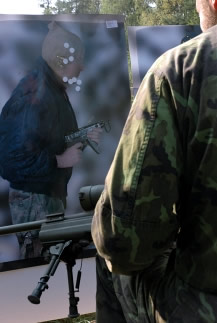 Precision of the existing cutting edge weapons is very high even at such long distances. Real action also usually requires hitting the target always by the first shot, which must moreover hit only small anatomically determined area. This is usually defined by a circle of the size of golf ball in the area of so-called medulla. Correct hitting this spot leads usually to a complete “switching off” of the man and immediate and complete immobilisation. This is necessary for prevention of action of the criminal or terrorist, such as slitting the victim’s throat, execution of hostage or exploding the bomb of suicide bomber.
Precision of the existing cutting edge weapons is very high even at such long distances. Real action also usually requires hitting the target always by the first shot, which must moreover hit only small anatomically determined area. This is usually defined by a circle of the size of golf ball in the area of so-called medulla. Correct hitting this spot leads usually to a complete “switching off” of the man and immediate and complete immobilisation. This is necessary for prevention of action of the criminal or terrorist, such as slitting the victim’s throat, execution of hostage or exploding the bomb of suicide bomber.
Although all the existing ESP targets had marking of this zone in the centre of head, practical experience gained at training of shooting at a distance of 100 m showed, that concentrated hits often fully covered this zone. It was then impossible to make appropriate evaluation and paradoxically there were no spots to shoot at anymore in spite large dimensions of the paper target. Apart from that the figures were depicted only in few positions – i.e. full frontal view or full profile. In reality it is often necessary to shoot at a person situated crossways in respect to the sniper’s position or even from behind.
Sometimes it is moreover necessary to hit the adversary’s head turned upwards or downwards. The sniper can also be high below the target or high above it. Hitting of the correct zone in such situations is extremely difficult, since the target spot given by anatomy need not be in such situations in the very centre of head and its concrete location may often change principally in dependence on the current position.
Our aim from the beginning was development of absolutely universal set of targets. Such a set that would enable an absolutely comprehensive training (including precise zeroing of telescope sight), so that it may partially substitute so-called „sniper’s diary“ and offered also a possibility of describing conditions, under which the shooting was made. Our efforts were concentrated on creation of rather specific and multi-functional sniper target, which would be suitable for regular training, as well as for realisation of contests of special armed forces.
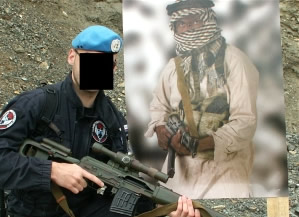 Another requirement was to define precisely the target zones and mark the targets with anatomic structural schemes with highlighting of the current position of vital organs of the adversary (in this case the brain) – similarly as it was done in the former ESP targets. Moreover, both these markings had to be made only slightly so that the sniper does not see them in its telescopic sight with strong zoom. The markings should be, however, well visible from the short distance – i.e. at evaluation of results of shooting and blinding of targets. The target should consist of several adversaries in various situations with different level of difficulty of hitting. The targets should be less or more sheltered, or even partly covered by some neutral person, which principally complicates the shooting. More difficult targets should be used for shooting from stable positions (e.g. lying position), the simpler targets should serve fro verification of the sniper’s ability of precise shooting also from alternative more difficult positions, enforced by actual situation – kneeling position, sitting position, standing position with support, etc.
Another requirement was to define precisely the target zones and mark the targets with anatomic structural schemes with highlighting of the current position of vital organs of the adversary (in this case the brain) – similarly as it was done in the former ESP targets. Moreover, both these markings had to be made only slightly so that the sniper does not see them in its telescopic sight with strong zoom. The markings should be, however, well visible from the short distance – i.e. at evaluation of results of shooting and blinding of targets. The target should consist of several adversaries in various situations with different level of difficulty of hitting. The targets should be less or more sheltered, or even partly covered by some neutral person, which principally complicates the shooting. More difficult targets should be used for shooting from stable positions (e.g. lying position), the simpler targets should serve fro verification of the sniper’s ability of precise shooting also from alternative more difficult positions, enforced by actual situation – kneeling position, sitting position, standing position with support, etc.
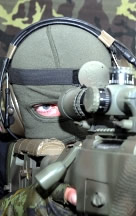 |
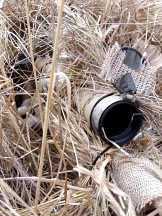 |
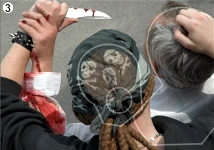 The concept of the new target after numerous consultations with elite snipers consists of several separate numbered sections. Each section describes a segment of certain action. It shows one of situation, which in practice would require imperative and urgent use of sniper’s rifle.
The concept of the new target after numerous consultations with elite snipers consists of several separate numbered sections. Each section describes a segment of certain action. It shows one of situation, which in practice would require imperative and urgent use of sniper’s rifle.
The shooting targets are based on highly realistic colour photos of masked and unmasked persons, so that sniper gets well accustomed already during his training to possible appearance of his future targets. At the same time this significantly increases attractiveness of training programs and maintains necessary motivation of trainees.
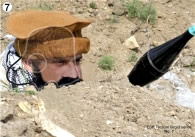 Due to more and more frequent involvement of the army and police abroad some of the persons are depicted in the form of adversaries typical for contemporary Iraq and Afghanistan. Heads of adversaries on the new targets have purposely very different positions in respect to the direction of shooting. All the figures have two zones – peripheral hitting zone „B“ (i.e. the shot person need not be completely eliminated) and small central „A“ spot (so-called optimum immediate elimination of human target).
Due to more and more frequent involvement of the army and police abroad some of the persons are depicted in the form of adversaries typical for contemporary Iraq and Afghanistan. Heads of adversaries on the new targets have purposely very different positions in respect to the direction of shooting. All the figures have two zones – peripheral hitting zone „B“ (i.e. the shot person need not be completely eliminated) and small central „A“ spot (so-called optimum immediate elimination of human target).
In certain targets the peripheral zone is lead at sufficient distance from possible shelters – the reason is that even tangential hits of some solid objects may in practice deviate the bullet or lead to its fragmentation. This may unfortunately result in critical non-elimination of the key target.
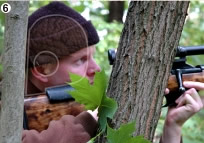 Thin line marks also precisely hitting of neutral persons – menaced hostages, i.e. the targets that must not be threatened by the shooting. Silhouettes of heads of criminals or terrorists are purposely “scattered“ by objects in their proximity. In real action the targets often blend with surrounding objects in some extent and their silhouettes are therefore less distinct for the sniper. This makes it even more difficult for the sniper to define precisely the spot to be hit. All this should serve in practice to ability of quick finding of the target even under less favourable conditions and to always spot subconsciously the target point for an optimum hit.
Thin line marks also precisely hitting of neutral persons – menaced hostages, i.e. the targets that must not be threatened by the shooting. Silhouettes of heads of criminals or terrorists are purposely “scattered“ by objects in their proximity. In real action the targets often blend with surrounding objects in some extent and their silhouettes are therefore less distinct for the sniper. This makes it even more difficult for the sniper to define precisely the spot to be hit. All this should serve in practice to ability of quick finding of the target even under less favourable conditions and to always spot subconsciously the target point for an optimum hit.
Some parts of the set of targets must force the sniper to look for the most appropriate solution of some specific situations – e.g. in case of problematic shooting through an inclined glass, shooting into the adversary’s gun, etc.
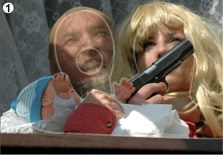 |
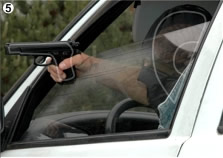 |
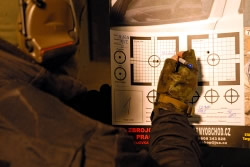 The part left down serves primarily for precise zeroing of the sniper’s rifle at usual 100 m. Two large correction squares serve for this purpose. The mesh on them serves for a quick correction of setting of the telescope sight and its possible correction. This is made very simple here – the number of missed fields is equal to the number of “clicks” for correcting the horizontal or vertical setting. Distance of the mesh lines conforms to two most frequently used systems of telescope sights’ cross hair – one square has shifts of 1 cm for 100 m, the other square enables correction by one quarter of MOA (minute of angle) for 100 m.
The part left down serves primarily for precise zeroing of the sniper’s rifle at usual 100 m. Two large correction squares serve for this purpose. The mesh on them serves for a quick correction of setting of the telescope sight and its possible correction. This is made very simple here – the number of missed fields is equal to the number of “clicks” for correcting the horizontal or vertical setting. Distance of the mesh lines conforms to two most frequently used systems of telescope sights’ cross hair – one square has shifts of 1 cm for 100 m, the other square enables correction by one quarter of MOA (minute of angle) for 100 m.
Use of the system is the following: the sniper chooses the appropriate square in dependence on the type of his telescope sight and he then very easily zeroes his gone by the manner described above. He then shoots at the second target in order to verify precision of his rifle. Both targets have not only the central cross hair with central circle and point, but also additional highlighted corners. They enable much better comprehension of telescope sight cross hair on the target. All this helps to get much more perfect comparison of several elements both horizontally and vertically. According to opinion of many renowned experts exactly this execution of the zeroing target was verified to lead to higher precision of shooting. Other five small targets with central cross serve for verification of the required precision of zeroing. They are made in a form of circle with diameter of 1 MOA (minute of angle), since scatter of hits for majority of modern rifles of this class at a distance of 100 m standardly be larger than exactly this area.
The lower part is at the same time available for entering all the important data, such as exact specification of the place, time and all key conditions of shooting, under which the zeroing was made. This can serve for later useful archiving of the whole target (or archiving of this part only) or for subsequent entering all the necessary data into the so-called “Sniper’s Diary“. This is a useful aid for long-term evaluation of properties of the rifle and level of shooting abilities of its user. The field “Target number“ at the bottom corner serves for legible marking of condition of the target. Big number written here (e.g. by thick felt-tip marker) helps to quickly identify sniper’s own target and can thus prevent occasional unwanted confusion with nearby targets. This appears to be a big advantage both at usual shooting practice and at shooting contests.
|
|
|
|
|
|
|
|
International sniper championship Libava
https://www.euro-security.info/en/targets/esp-sniper-targets.html#sigProIdb9a6e03dd5
International sniper seminar of the antiteroristic unit
https://www.euro-security.info/en/targets/esp-sniper-targets.html#sigProIdd8dce5be9b








